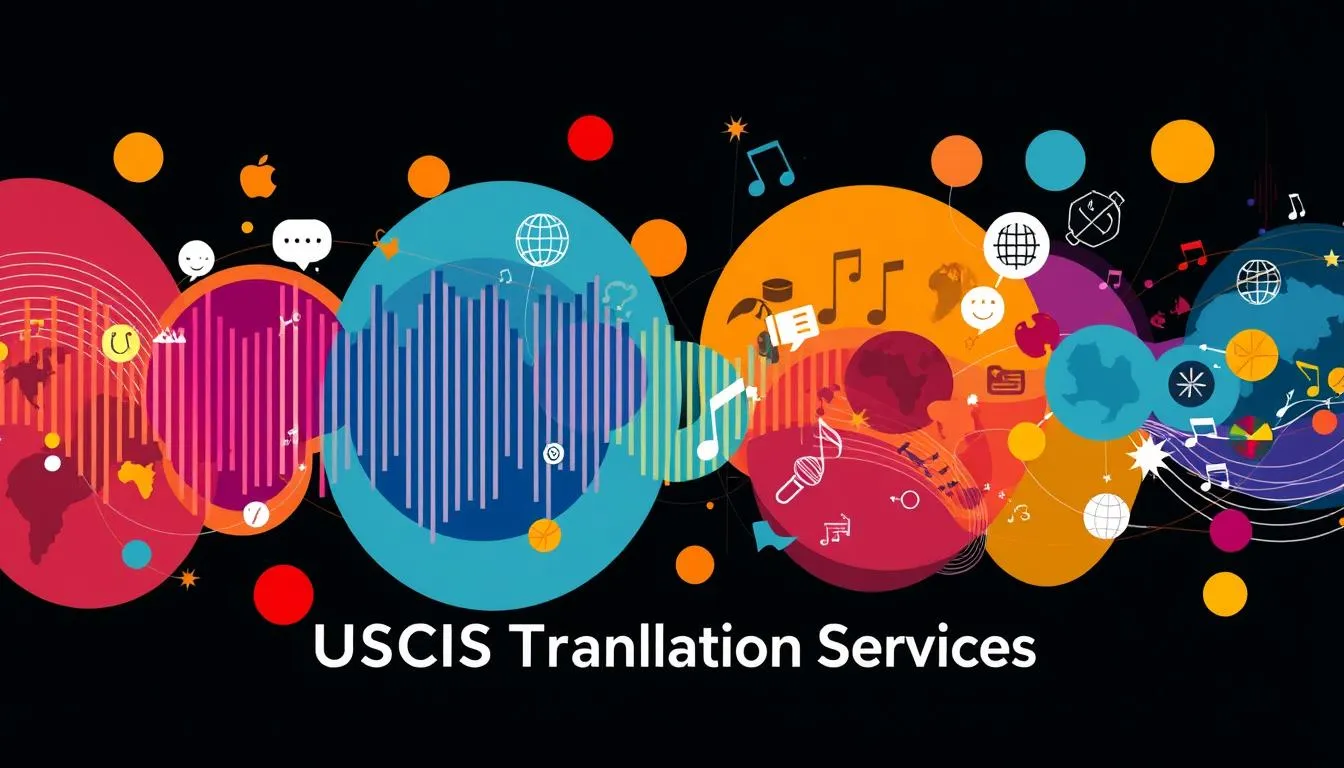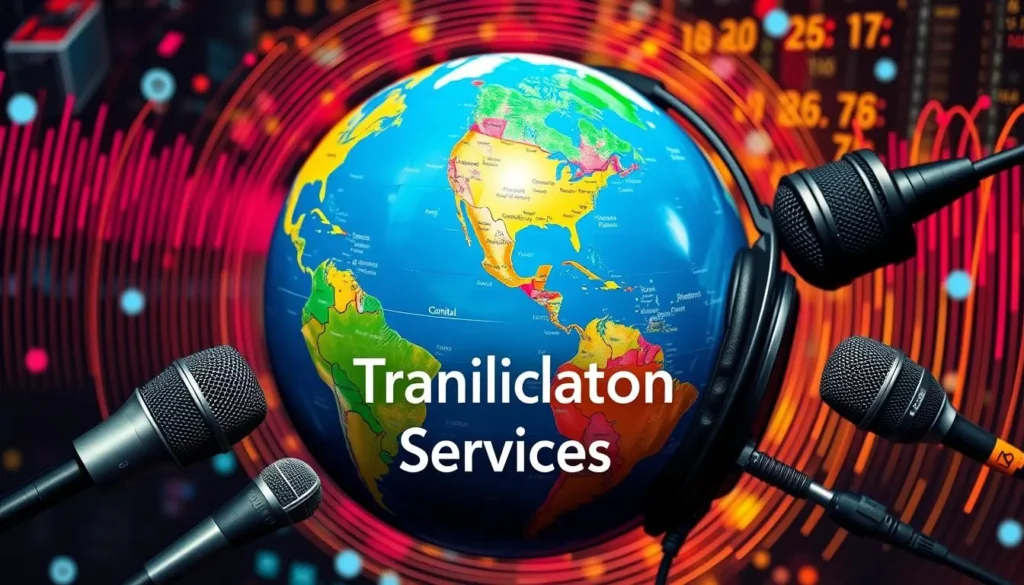Audio translation services break down communication barriers in our connected world. They help businesses, researchers, and individuals connect across languages with ease.
These services change spoken content from one language to another. They create chances for global understanding in many areas.
The digital age has changed how we translate languages. New services use AI to give accurate, real-time translations.
These tools capture speech patterns and cultural context. They work for podcasts, video calls, and other content.
Audio translation helps share information across different language groups. It allows organizations to reach wider audiences.
Professional audio translation is more than just changing words. It keeps the original message’s meaning and tone intact.
Understanding Audio Translation Services
Audio translation services bridge communication gaps across cultures and languages. They turn spoken content from one language to another, ensuring accurate communication.
Professional audio translation uses multiple techniques. Simultaneous interpretation happens in real-time during conferences or live events.
Consecutive interpretation is used in smaller meetings. Translators listen to a speaker’s segment and then translate it accurately.
Voice-over services replace original audio with translated narration. This is used in documentaries, training videos, and international media productions.
Modern services use AI and machine learning. These tools help translators work faster while maintaining high-quality translations.
Linguists review machine-generated translations to ensure precision and cultural nuance. The goal is to keep the original message’s intent and emotion.
These services are crucial for global communication. They’re used in business presentations, educational content, and multimedia projects.
Benefits of Professional Audio Translation
“An abstract representation of audio translation services benefits, featuring sound waves transforming into various cultural symbols, surrounded by vibrant colors and dynamic shapes, evoking a sense of connectivity and communication, with the brand name ‘USCIS Translation Services’ subtly integrated into the design.”
Audio translation services open new doors for businesses worldwide. They bridge cultural gaps with expert communication skills.
These services help companies reach global audiences easily. They turn audio content into many languages.
Skilled translators understand cultural nuances and local communication styles. This helps brands connect well with international listeners.
Audio translation makes content more accessible to diverse groups. It allows more people to engage with educational and business materials.
Professional translators use advanced tech and deep language knowledge. They keep the original tone and meaning in different languages.

How to Choose the Right Audio Translation Service
Choosing audio translation services requires careful thought. Consider the provider’s language expertise and industry specialization.
Look for services with proven track records in your field. Check their portfolio and client testimonials.
Experienced providers understand nuanced language requirements better. They excel in technical, medical, and legal translations.
Quality assurance is crucial when selecting translation services. Reputable providers use multiple professional translators for reviews.
They employ advanced technology and native speakers for accuracy. Request sample translations to assess their linguistic proficiency.
Consider turnaround time and pricing when choosing a service. Compare multiple providers for delivery speed and translation quality.
A reliable service balances affordability with exceptional linguistic expertise. Look for transparent communication and clear project management.
Ask about their translation process and quality control mechanisms. The right partner will show commitment to your communication goals.
Common Challenges in Audio Translation
Audio translation faces complex language hurdles. Experts must decode nuances, dialects, and cultural expressions.
Word-for-word conversion isn’t enough. Specialized knowledge is needed for medical, legal, and technical content.
Translators must capture words and underlying sentiment. This needs deep understanding of both languages.
Accent and pronunciation variations add complexity. Professionals ensure translated audio sounds natural and authentic.
Audio translation services use training and cultural expertise. They combine human skills with advanced software for accurate translations.
The Future of Audio Translation Services
AI is changing audio translation services. It’s driving innovation in language communication tech.
Machine learning algorithms are getting more sophisticated. They enable better translations across different languages.
Real-time translation devices are changing global communication. Big tech companies invest in instant speech translation tech.
These tools break down barriers in business and travel. They also help in international interactions.
Human expertise is still vital in audio translation. Translators bring cultural understanding that AI can’t match.
The best solutions will mix machines and humans. This creates a strong approach to language translation.
Future services will work smoothly with digital platforms. They’ll support global teamwork and communication.
As tech improves, we’ll see smarter translation tools. They’ll keep language nuances while being fast and accurate. click here for more info.
FAQ
What exactly are audio translation services?
Audio translation services change spoken words from one language to another. They help people and businesses talk across language barriers.
This can include live interpretation, voice-overs, and turning audio into different languages.
How accurate are professional audio translation services?
Professional audio translation services are usually 95-99% accurate. Expert translators understand context, culture, and special industry words.
They use top-notch tech and native speakers to ensure high-quality translations.
What types of audio content can be translated?
Audio translation services can handle many types of content. This includes business meetings, conferences, podcasts, and education materials.
They also translate marketing videos, legal talks, doctor visits, and entertainment like movies.
How long does an audio translation typically take?
Translation time changes based on how long and complex the audio is. Short recordings might take a few hours to finish.
Longer or more technical content could take several days. Most services tell you how long it will take before starting.
What languages do audio translation services cover?
Most services offer translations for big world languages like Spanish, Chinese, French, and German. They also cover Arabic, Portuguese, and many others.
Some special providers can handle rare or less common language pairs too.
Are audio translation services expensive?
Prices change based on language difficulty, audio length, needed skills, and time frame. Professional services aren’t the cheapest option.
But they give high-quality, accurate translations that can save money by avoiding mix-ups.
Can audio translations be used for legal or medical purposes?
Yes, many services offer special translations for legal and medical use. These translations include extra checks to ensure they’re accurate.
They meet the high standards required by courts, hospitals, and rule-making groups.
How do technological advancements impact audio translation?
New tech like AI and machine learning help make audio translation faster and more accurate. But human experts are still needed.
They make sure translations are culturally right in ways that machines can’t copy.
What should I look for when choosing an audio translation service?
Look for a service that knows your industry and the languages you need. Check their quality checks, how fast they work, and their prices.
Read what other clients say. Choose services with skilled translators and a history of good work.
Do audio translation services handle different accents and dialects?
Professional services use translators who are native speakers. They understand local ways of speaking.
This ensures that accents, dialects, and local sayings are correctly translated, keeping the original message intact.


